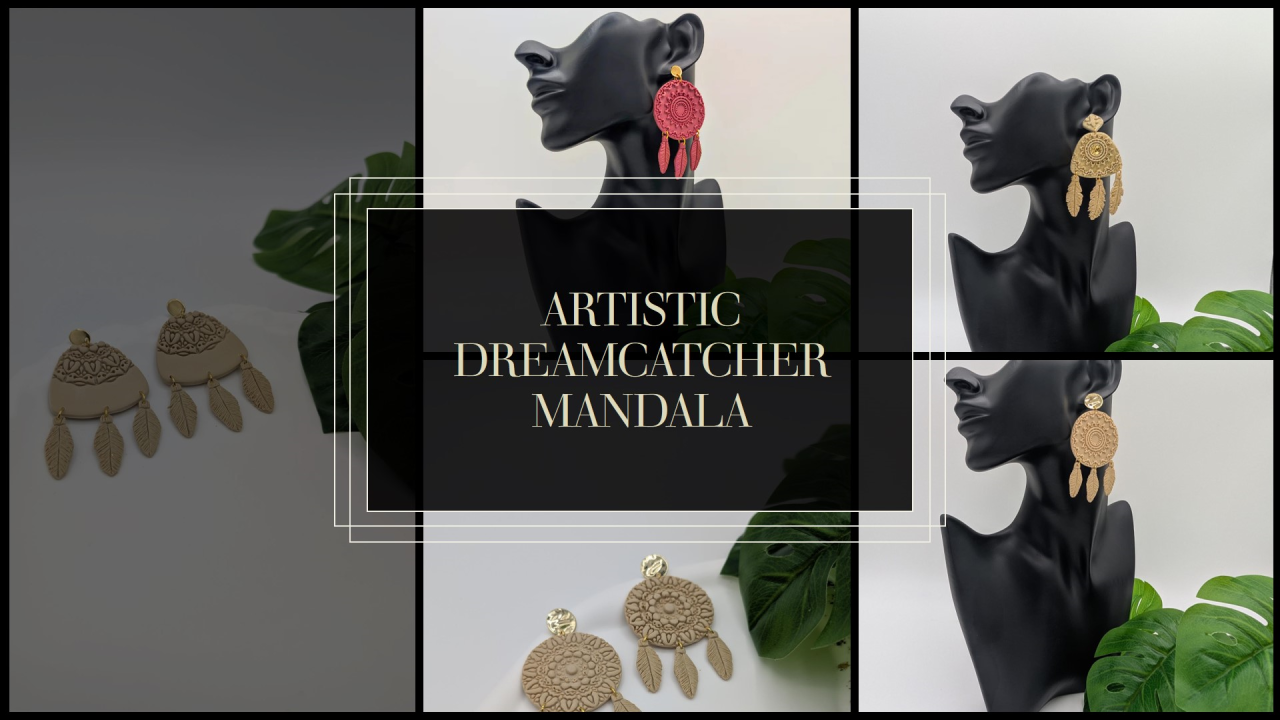
The Ultimate Beginner’s Guide to Polymer Clay Art
Embark on a journey of creativity with our comprehensive beginner's guide to polymer clay. Discover the joy of crafting with tips on materials, techniques, and projects perfect for starting your exploration into this colorful world
Introduction to Polymer Clay Art
Welcome to the vibrant and endlessly creative world of polymer clay art, a medium that captivates with its versatility and the boundless opportunities it offers for artistic expression. Whether you're drawn to crafting intricate jewelry, whimsical figurines, or unique home décor, polymer clay is a medium that promises not only the freedom to bring any idea to life but also the joy of seeing your visions become tangible creations. This guide aims to lay down the foundation for your journey into polymer clay art, from understanding what polymer clay is to guiding you through your first projects.
What is Polymer Clay?
At its core, polymer clay is a type of modeling clay based on the polymer polyvinyl chloride (PVC), which hardens when baked in a conventional oven. Unlike air-dry clays, it remains pliable until cured, offering artists and hobbyists the flexibility to perfect their pieces over time. Available in a rainbow of colors, polymer clay can be mixed, conditioned, shaped, and eventually hardened to create durable and vibrant artworks.
Choosing the Right Type of Polymer Clay
Navigating the array of polymer clay brands and types can be overwhelming for beginners. Key brands include Sculpey, Fimo, and Kato, each offering products with unique properties suited for different applications. For those just starting, Sculpey Premo stands out for its excellent balance of firmness and pliability, making it both easy to work with and durable after baking.
The Color Spectrum
Polymer clay's extensive color palette is one of its most appealing features. From translucent and metallic finishes to glow-in-the-dark hues, the potential to create pieces that match your artistic vision is limitless. Learning to mix colors is a skill that will greatly enhance the uniqueness of your projects, allowing you to achieve the perfect shade or gradient.
Essential Tools for Polymer Clay Art
Crafting with polymer clay requires more than just your hands and imagination. Assembling a toolkit with essential items will make the creative process smoother and more enjoyable.
Basic Toolkit Essentials - Polymer Clay Art
Work Surface: A smooth, non-porous surface is ideal for rolling and shaping clay.
Rolling Pin or Pasta Machine: Essential for conditioning clay and creating uniform sheets.
Blades and Cutters: Precision tools for cutting and shaping your designs.
Oven: A conventional home oven is used for curing (baking) the clay to harden it.
Advanced Tools
As you grow more comfortable with basic projects, you may wish to explore tools that add texture and detail, such as:
Texture Sheets: To imprint patterns onto your clay.
Molds: Silicone molds can be used for creating consistent shapes or intricate designs.
Extruders: Useful for creating long, uniform strands of clay.
Conditioning and Molding Your Polymer Clay
The Art of Conditioning
Conditioning is the process of preparing polymer clay for use, making it more pliable and easier to shape. This is done by kneading the clay with your hands or running it through a pasta machine. Properly conditioned clay should be soft and smooth, without any cracks or crumbles.
Molding Techniques
Shaping polymer clay can be as simple as hand-forming basic shapes or as complex as using molds and tools to achieve detailed sculptures. Beginners should start with simple projects to get a feel for the material, gradually moving on to more advanced techniques as their confidence and skills develop.
Baking Your Polymer Clay Creations
Curing polymer clay in an oven is the final step in bringing your project to life. It's a critical process that transforms the clay from a malleable state to a hardened, durable finish.
Oven-Bake Instructions
Temperature and Time: Baking temperatures and times vary by clay type, but a general guideline is to bake at 265°F (130°C) for 15-30 minutes per 1/4 inch of thickness.
Monitoring the Process: Using an oven thermometer is advisable to ensure the temperature is accurate, preventing the clay from burning or not curing properly.
Embarking on Your First Projects
Starting with simple projects can help build your confidence and skills in working with polymer clay. Consider projects like basic beads, pendants, or small figurines, which provide a solid foundation in shaping and baking techniques.
Project Ideas for Beginners
Beaded Jewellery: Crafting your own beads for necklaces or bracelets.
Decorative Knobs: Creating custom knobs for cabinets or drawers.
Miniature Plants: Sculpting tiny plants or flowers for dollhouses or decor.
As you embark on your polymer clay journey, remember that patience and practice are your best allies. Each piece you create will bring new insights and ideas, helping you grow as an artist. At Balwin Studios, we're here to support your creative exploration, offering a wide range of polymer clay supplies and inspirations. Dive into the world of polymer clay art with us and discover the endless possibilities of this fascinating medium.
Advanced Techniques in Polymer Clay Art
As your skills and confidence grow, diving into advanced polymer clay techniques can further expand your creative possibilities. These methods allow for more intricate designs and can transform simple projects into works of art.
Blending and Gradients
Creating smooth color transitions, or gradients, in polymer clay can add a realistic or fantastical element to your pieces. The Skinner Blend, a popular technique among polymer clay artists, involves blending two or more colors to create a seamless gradient, perfect for petals, skies, and abstract designs.
Caning for Complex Patterns
Caning is a technique borrowed from glasswork that involves creating logs or cylinders of clay with intricate designs that run through the length of the cane. When sliced, each piece reveals the design, which can be used to decorate surfaces or as part of larger sculptures. Mastering the cane technique opens up a world of pattern possibilities.
Sculpting Detailed Figurines
Sculpting with polymer clay can range from simple models to complex figurines with detailed features. Tools like dental tools, knitting needles, and silicone-tipped sculpting tools can help achieve fine details. Building an armature or skeleton inside larger sculptures ensures stability and realism in poses.
Seasonal Projects and Gifts
Polymer clay's versatility makes it ideal for creating personalised gifts and seasonal decorations. Whether it's ornaments for Christmas, heart-shaped pendants for Valentine's Day, or decorative eggs for Easter, polymer clay allows you to add a personal touch to any celebration.
Custom Ornaments
Creating custom ornaments with polymer clay can be a festive project for all ages. Incorporate textures, mica powders, and metallic leaf for a sparkling finish that catches the light on any holiday tree.
Personalised Jewellery
Polymer clay jewellery can range from simple and elegant to bold and intricate. Design unique pieces that reflect personal style or create bespoke gifts that carry a special meaning.
Preserving and Finishing Your Artwork
After baking, your polymer clay projects can be finished and preserved with various techniques to enhance their durability and appearance.
Sanding and Buffing
Sanding your baked polymer clay pieces can remove imperfections and prepare the surface for buffing. Buffing, either by hand or with a machine, brings a smooth, glossy finish to the clay, elevating the final appearance.
Varnishing and Sealing
Applying a varnish or sealant can protect your polymer clay projects from wear and tear, make colors more vibrant, and add a matte or gloss finish according to your preference.
Joining the Polymer Clay Community
Engaging with the polymer clay community can provide inspiration, support, and opportunities to learn new techniques. Online forums, social media groups, and workshops are great places to connect with fellow enthusiasts and share your creations.
Workshops and Classes
Consider participating in workshops and classes to improve your skills. These sessions can provide hands-on experience with new techniques and offer the chance to ask questions and receive feedback in a supportive environment.
Balwin Studios: Your Partner in Creativity
At Balwin Studios, we understand the passion and dedication that goes into every polymer clay project. Our curated selection of high-quality polymer clay, tools, and accessories is designed to support artists at every stage of their creative journey.
Expanding Your Toolkit with Balwin Studios
Explore our extensive range of polymer clay brands, including Sculpey, Fimo, and Kato, to find the perfect match for your project. Our selection of specialized tools, from sculpting sets to texture sheets and pasta machines, can help you refine your technique and bring your visions to life.
Learn and Grow with Balwin Studios Workshops
We're proud to offer workshops and classes led by experienced polymer clay artists. These sessions cater to various skill levels, from beginners looking to learn the basics to advanced artists seeking to master new techniques. Our workshops provide a welcoming space to explore your creativity, learn from experts, and connect with a community of like-minded individuals.
Explore Our Blog for Inspiration and Guidance
At Balwin Studios, we believe in the power of sharing knowledge and inspiration. Our blog is a treasure trove of resources for polymer clay enthusiasts of all levels. Whether you're looking for your next project idea or need detailed guidance on a new technique, our blog posts are designed to inspire and inform.
At Balwin Studios, we're more than just a supplier; we're a community of artists, creators, and dreamers. Whether you're just starting your polymer clay journey or looking to push the boundaries of your craft, we're here to support, inspire, and celebrate your artistic endeavours.



